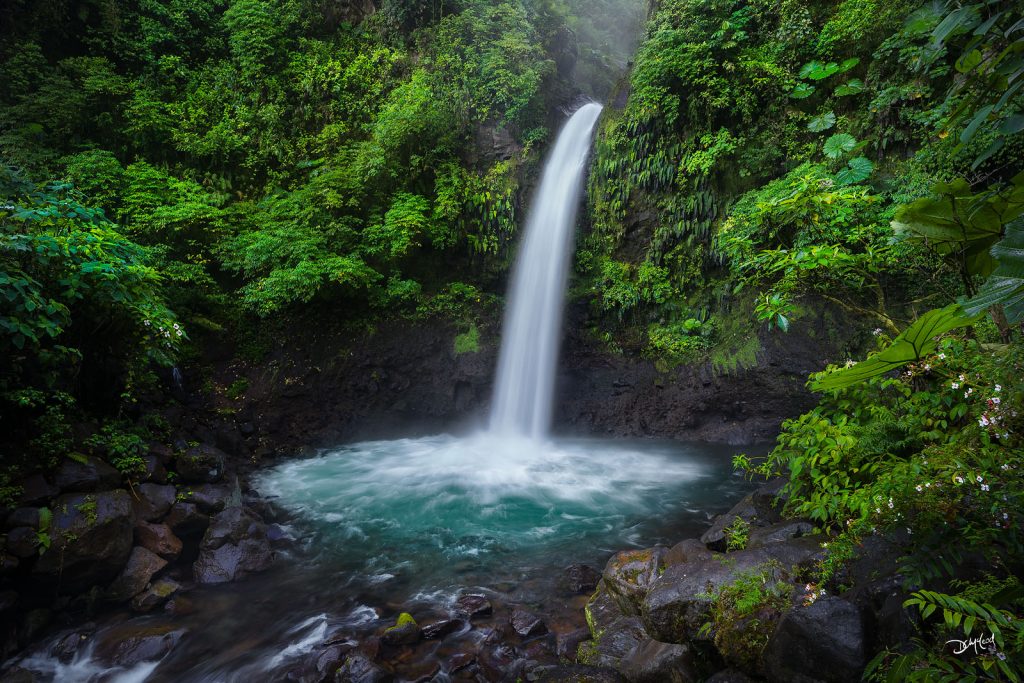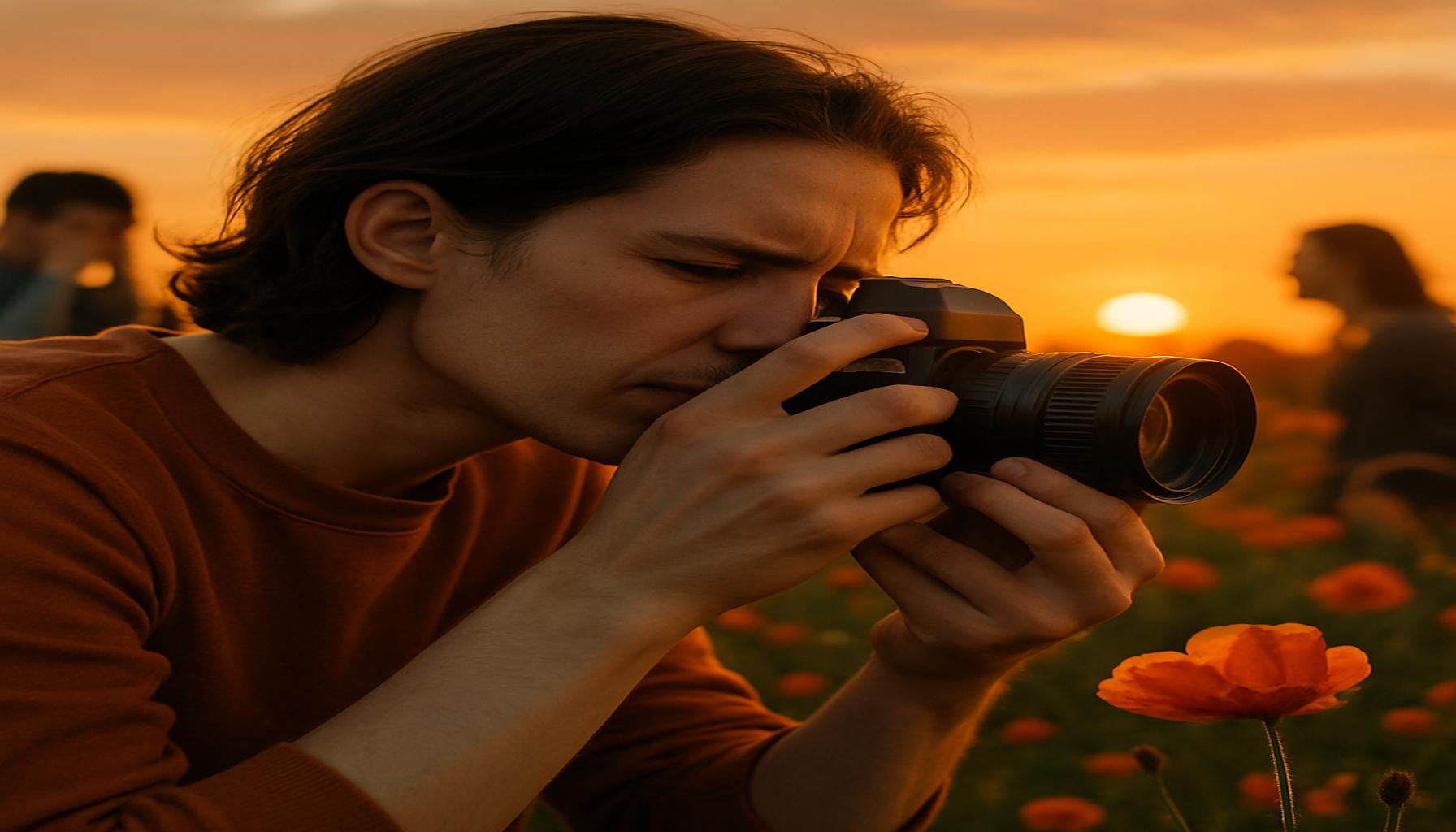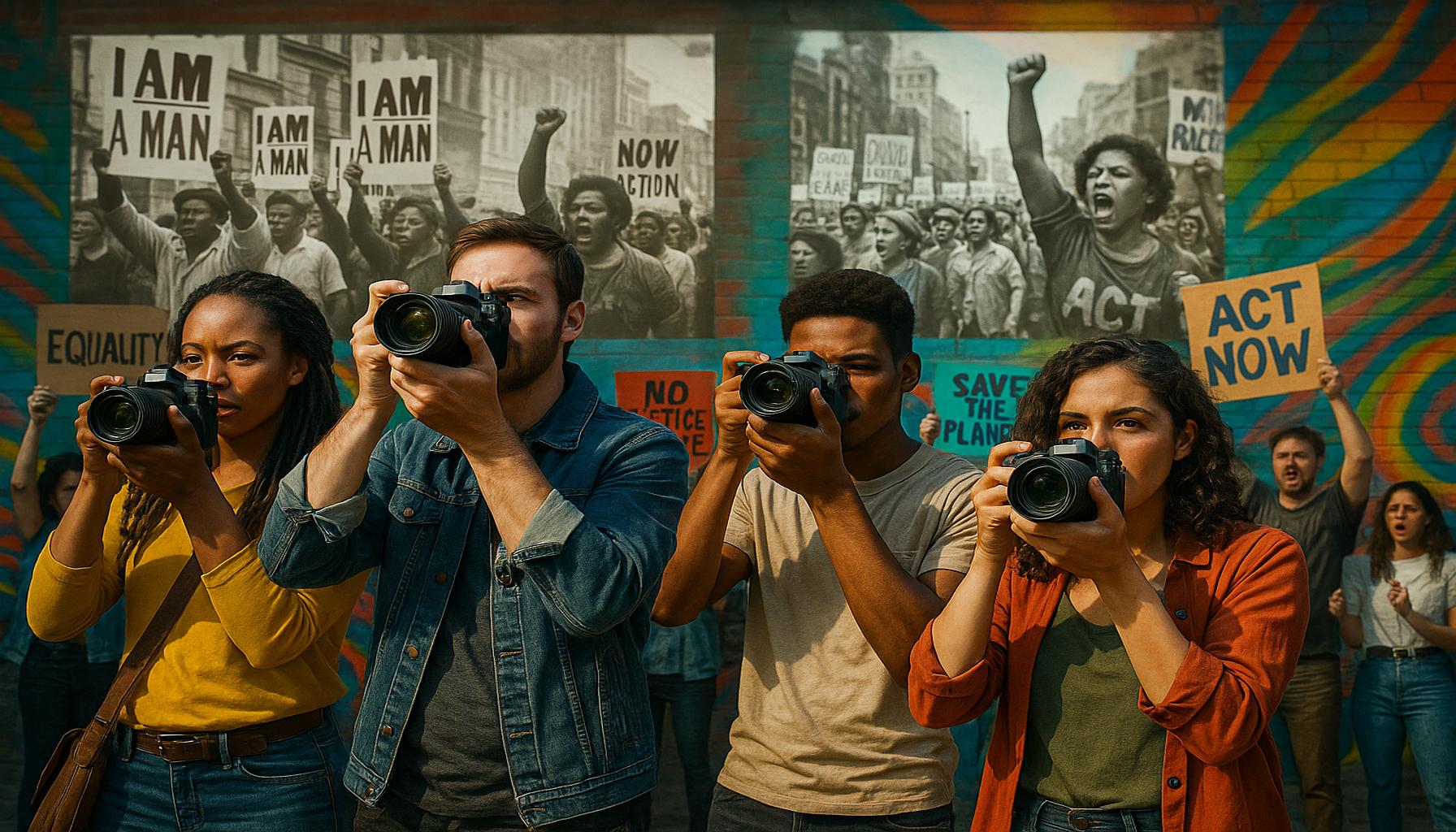Photography and Sustainability: How to Capture the Beauty of the Natural World and Promote Conservation

The Role of Photography in Promoting Environmental Awareness
Photography serves as a powerful medium to showcase the breathtaking beauty of our planet. By immortalizing stunning landscapes and diverse ecosystems, photographers can inspire change and spotlight urgent environmental issues. The connection between photography and sustainability is not just about capturing images; it is about capturing hearts and minds to promote conservation. As environmental challenges become more pressing, the role of visual art has never been more critical.
Consider the following ways photography can contribute to sustainability:
- Awareness Raising: Visual storytelling can educate audiences about endangered species and habitats. For instance, photographers like National Geographic’s Joel Sartore have dedicated their careers to documenting wildlife on the brink of extinction. Through his “Photo Ark” project, Sartore captures images of animals from around the world, many of which are rarely seen by the public. His stunning portraits serve to illuminate the plight of these creatures, urging viewers to take action for their protection.
- Community Engagement: Local photographers have a unique opportunity to highlight their surroundings, galvanizing community action for preservation. In cities from New York to San Francisco, grassroots initiatives often stem from local artists sharing their perspectives on urban decay and natural beauty. Initiatives like “The Nature Conservancy’s” community photo contests encourage these local voices, allowing citizens to connect with the beauty of their own backyards and inspire collective conservation efforts.
- Advocacy: Powerful images can support environmental campaigns, amplifying voices calling for change. Photographers often collaborate with non-profit organizations to create compelling visuals that accompany their mission statements and fundraising efforts. Famous campaigns such as “Earth Hour,” wherein iconic landmarks are illuminated to raise awareness for climate change, use striking visuals to create a palpable emotional movement that can motivate individuals to switch off their lights for an hour.
In the United States, photographers have documented both the stunning natural wonders—from the rolling hills of the Appalachian Mountains to the expansive forests of the Pacific Northwest—and the detrimental effects of climate change and human encroachment. For example, photographers like Ansel Adams helped transform the public’s perception of conservation through his black and white landscapes of the national parks, leading to legislative actions that protected these stunning vistas. Images not only evoke emotional responses but also ignite interest in conservation initiatives. As individuals become more aware of environmental issues, many seek ways to engage, participate, and make a difference.
Join us as we delve deeper into the synergy between photography and sustainability. Discover how capturing the essence of the natural world can not only showcase its beauty but also spark vital conversations about conservation efforts. For those inspired by these visuals, further exploration into local conservation groups and photography exhibitions can provide numerous ways to get involved, ensuring that we preserve the awe-inspiring beauty of our planet for future generations.
DIVE DEEPER: Click here to explore the evolution of crafting in the digital age</p

Capturing the Essence of the Environment
As we navigate an era marked by climate change and biodiversity loss, the pursuit of sustainability becomes paramount. Photography, with its ability to encapsulate fleeting moments, becomes a vital tool in this journey toward environmental stewardship. By portraying the raw beauty of landscapes, wildlife, and the intricate relationships within ecosystems, photographers can not only showcase nature but also foster a deeper appreciation that motivates conservation efforts.
But how exactly does one translate the intangible emotions inspired by nature into compelling images? Here are essential approaches photographers can embrace to fuse their passion for photography with a commitment to sustainability:
- Understanding Natural Light: The play of light can dramatically influence the mood and meaning of a photograph. Early mornings and late afternoons—often referred to as the “golden hours”—offer soft, diffused light that enhances the beauty of outdoor scenes. Photographers should learn to identify these times and how to utilize natural light effectively, ensuring their captures not only reflect authenticity but also inspire viewers to cherish the beauty around them.
- Candid Wildlife Encounters: Capturing wildlife in its natural habitat provides an unparalleled perspective of the animal kingdom. Photographers can seek opportunities to document behaviors, such as nesting or feeding, that reveal the vulnerabilities of species under threat. Understanding animal behavior, patterns, and habitats enables photographers to take images that resonate deeply with viewers, urging them to support conservation initiatives that protect these species.
- Respecting Nature’s Boundaries: Responsible photography is essential for promoting sustainability. Photographers should practice ethical guidelines that prioritize the ecosystem. This includes minimizing disturbance to wildlife, adhering to regulations in protected areas, and not leaving behind waste. By setting a positive example, photographers can advocate for respectful interactions with nature, encouraging their audience to do the same.
The impact of photography on environmental conservation extends beyond merely beautiful images. It also serves to create meaningful narratives that give voice to pressing ecological issues such as habitat destruction and climate change. For example, dedicated initiatives like the International League of Conservation Photographers strive to use visual storytelling to elevate important causes, informing policymakers and igniting public interest.
Moreover, social media platforms now allow for wider dissemination of these messages. Images shared online have the power to go viral, reaching millions of individuals in a matter of hours. As a result, the connection between photography and sustainability can lead not only to increased awareness but also to action—individuals are more likely to engage in conservation efforts when a photograph resonates with their emotions and conscience.
In conclusion, photography holds the potential to bridge the gap between appreciation and action when it comes to environmental sustainability. It compels us to look closer, observe the beauty of our natural world, and feel a sense of urgency in protecting it. Embracing this responsibility ensures that generations to come will not only witness the awe-inspiring landscapes and vibrant wildlife but also strive towards a sustainable future.
Exploring Eco-conscious Photography Techniques
As photographers increasingly recognize their potential impact on environmental conservation, eco-conscious photography techniques are gaining traction. These practices not only allow photographers to capture the stunning beauty of the natural world but also to contribute positively to its preservation. From using sustainable materials for equipment to employing techniques that minimize ecological footprints, every decision can make a difference.
Utilizing Natural Light and Composition
One effective way to promote sustainability is through the use of natural light in photography. By harnessing the sun’s rays, photographers can reduce their reliance on power for artificial lighting, which often leads to a lower carbon footprint. Furthermore, thoughtful composition strategies that align with the principles of sustainability can help photographers tell powerful stories about conservation, drawing attention to endangered habitats and species.
Engaging with Local Conservation Efforts
To deepen their impact, photographers can collaborate with local conservation organizations. This partnership not only fosters a greater understanding of environmental issues but also allows artists to document real-time efforts towards habitat restoration and wildlife protection. For example, documenting community-led conservation initiatives can highlight the importance of local knowledge and action in fighting ecological degradation.
The Role of Social Media
In today’s digital age, platforms like Instagram and Facebook can serve as powerful tools for conservation awareness. Photographers can reach wide audiences and inspire change through compelling imagery and storytelling. By using relevant hashtags and sharing their experiences, they can attract followers who are interested in both photography and sustainable practices, creating a community dedicated to protecting our planet.
As we explore the synergy between photography and sustainability, let us delve deeper into the methodologies and philosophies that can guide both aspiring and established photographers in their quest to marry beauty with conservation.
| Category | Benefits |
|---|---|
| Sustainable Practices | Reduces environmental impact while enhancing creativity. |
| Natural Light Usage | Minimizes power consumption and enhances subject beauty. |
| Community Engagement | Supports local conservation efforts and builds awareness. |
| Social Media Impact | Increases visibility for conservation causes and connects communities. |
The intersection of photography and sustainability invites photographers to not only create breathtaking art but also to take active roles in conservation efforts. By utilizing eco-friendly techniques and platforms to share their work, they can resonate deeply with audiences and advocates for the natural world.
DISCOVER MORE: Click here to dive into watercolor techniques
Photography as a Catalyst for Conservation
Photography not only serves as a medium for artistic expression but also acts as a powerful catalyst for environmental conservation. By utilizing photography to tell compelling stories of our planet’s diverse ecosystems and the challenges they face, photographers can inspire action and change on both individual and community levels. This connection between imagery and advocacy is becoming increasingly essential as the urgency for sustainability escalates.
One significant aspect of this is the importance of *visual storytelling*. Photographers have the unique opportunity to document the impacts of human activity on the environment through a see-it-to-believe-it approach. Photographers capturing the stark contrasts of deforestation or the affects of rising sea levels can evoke a visceral response that statistical data alone may fail to achieve. For instance, the stark visuals from the Amazon rainforest, where vibrant biodiversity is replaced by barren land, can compel viewers to recognize the importance of preserving these irreplaceable ecosystems.
Furthermore, engaging with local communities during photographic initiatives is crucial. Photographers can collaborate with indigenous peoples and conservation groups to highlight their traditional knowledge and practices. This not only amplifies their voices but also emphasizes the often-overlooked value of local stewardship in conservation efforts. The partnership between artists and communities can create powerful narratives that celebrate cultural heritage while stressing the importance of safeguarding natural resources.
Another compelling avenue in fostering sustainability through photography is the rise of citizen science. Enthusiastic amateur photographers can contribute to conservation efforts by documenting species, observing behaviors, and taking note of changing landscapes. Platforms such as iNaturalist invite users to submit their nature photographs, which can be utilized by researchers to track biodiversity and monitor species health. These contributions can create a wealth of data that supports scientific research and enables proactive strategies for conservation.
The advent of technology also provides unique opportunities for photographers to promote sustainability. Drones, for example, offer aerial perspectives that can reveal the scale of environmental change, such as eroded coastlines or wildfires. Equipped with this information, stakeholders can make more informed decisions regarding conservation strategies. Additionally, advancements in smartphone photography have transformed anyone into an advocate for sustainability, encouraging more people to share their views and experiences of the natural world online.
As images circulate across various social media platforms, the power of *hashtag activism* emerges. Campaigns that pair stunning photography with unifying messages can galvanize communities toward specific causes—be it habitat preservation, wildlife protection, or climate change mitigation. A visually striking photograph combined with appropriate hashtags can lead to rapid awareness blossoming into grassroots movements that push for legislative changes or community actions.
Through these avenues, the role of photography in promoting sustainability becomes more apparent. As we continue to face the daunting challenges posed by climate change and environmental degradation, the lens of a camera can focus our collective intention on protecting our planet. By harnessing creativity, technology, and community engagement, photography can drive home the need for immediate action, reminding us to cherish the natural beauty we are at risk of losing.
DIVE DEEPER: Click here to learn more about improvisation in music
Final Thoughts on Photography and Sustainability
In conclusion, the intersection of photography and sustainability offers a rich tapestry of opportunities for awareness, education, and advocacy in our efforts to protect the natural world. By employing the art of *visual storytelling*, photographers bridge the gap between the viewer and pressing environmental issues, compelling audiences to engage both emotionally and intellectually. The stark realities drawn from breathtaking images can fuel a collective desire for change, highlighting the delicate balance we must maintain with our planet.
Moreover, the collaboration with local communities and incorporation of traditional ecological knowledge serves to enhance the depth and authenticity of conservation narratives. This not only champions indigenous voices but also fosters a holistic understanding of how cultural heritage and environmental stewardship are inextricably linked. As we advocate for sustainable practices, leveraging citizen science and innovative technologies, we can empower individuals to become active participants in conservation efforts, regardless of their background.
The role of *hashtag activism* exemplifies the modern-day potential of social media as a tool for mobilization around environmental concerns. With the click of a button, a single photograph can raise awareness and inspire grassroots movements, turning mere observations into impactful advocacy. As we navigate the challenges posed by climate change and loss of biodiversity, we must recognize the crucial role photography plays in amplifying our message and rallying our communities toward protective actions.
Ultimately, by exploring the beauty of our planet through the lens, we not only honor its splendor but also commit to preserving it for future generations. As stewards of both our art and our environment, let us harness this potent synergy of photography and sustainability as a call to action—one that emphasizes the urgency of conservation and the undeniable beauty we stand to lose.



